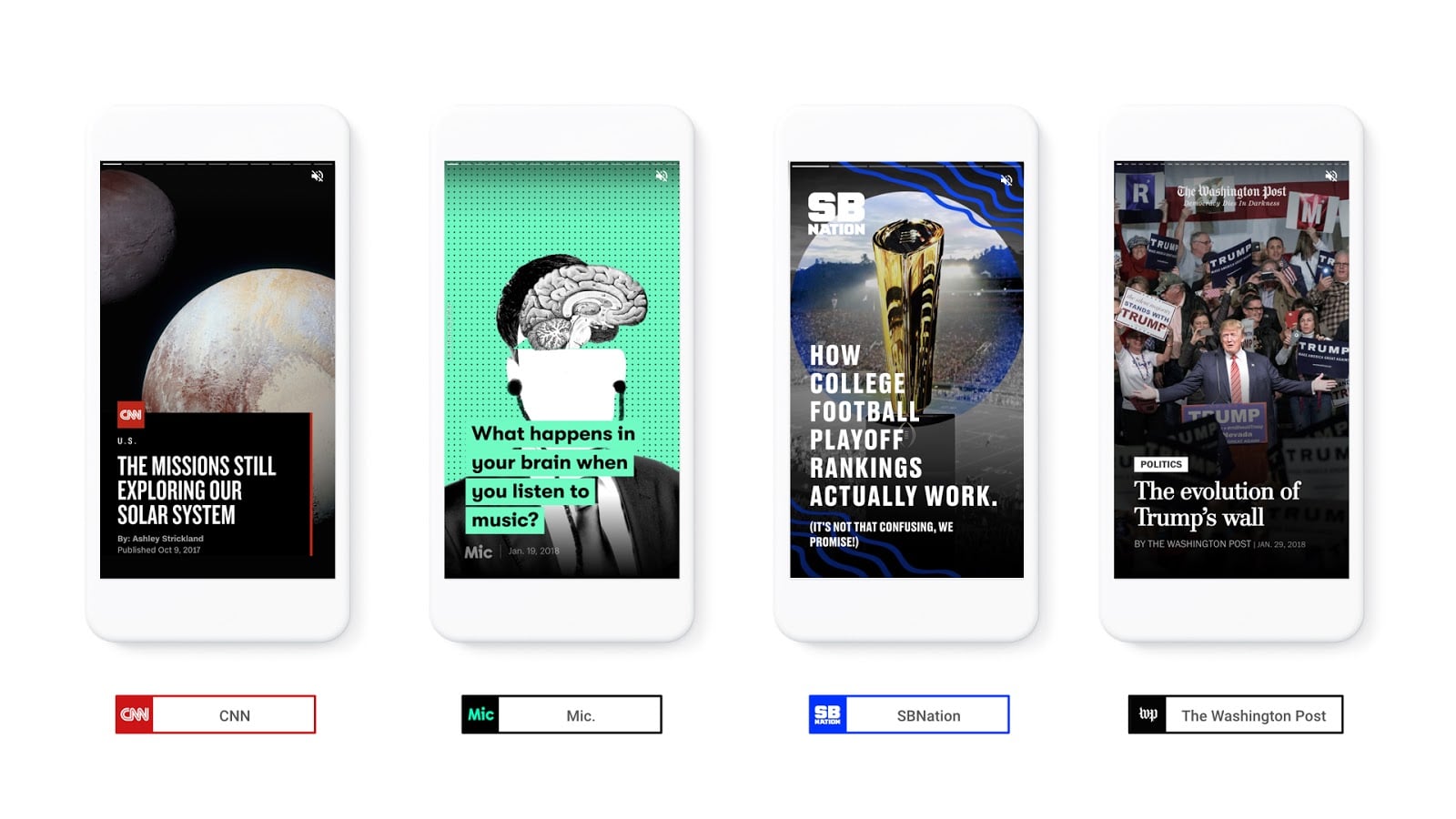Alphabet Inc. has recently unveiled a new feature that would allow publishers to create visual Google AMP stories in a format similar to that popularized by Snapchat and Instagram.
The new rollout of Google AMP stories will start on Tuesday, and will allow publishers to try out a developer preview of the feature. The initial release will feature swipeable slides of text, photos, graphics, and videos according to a blog post from Google.
Some big names in publishing were involved in the development, including Vox Media, Condé Nast, Meredith Corporation, and CNN. Outlets controlled by these corporations have since started creating stories for the mobile web.
The Google AMP stories, as mentioned above, are styled in a similar way to Snapchat’s vertical stories feature, which has since inspired similar designs from the likes of Facebook and Instagram – the latter launching the feature in 2016 to rave reviews. It’s clear that the format is well-loved by users of social media, and with the influence of the format beginning to increase, it’s no wonder that Google AMP stories are starting to make an appearance and allowing traditional publishers to capitalize on the growing mobile market.
However, unlike the implementations from Snapchat and Instagram, the Google AMP stories don’t currently allow advertising to be incorporated. Google has stated that they’re in the process of creating an implementation for advertisements, which is to be expected considering that’s one of the primary ways in which the company makes its money, but there’s no word on when they will be implemented. Until the time the ads are added, publishers will have to be content with experimenting with this new format without the addition of traditional monetization.
The Google AMP stories format builds on code already established by their Accelerated Mobile Pages (AMP) project, which is a framework that allows publishers to create web pages that load much faster on mobile devices when compared to traditional website designs. The format thus far has been met with mixed reviews, with some developers praising the increased traffic the faster web pages have brought with other webmasters claiming that the format isn’t robust enough to allow the types of ads they’d like to include – decreasing revenue overall. It remains to be seen whether the Google AMP stories advertising capabilities will be complete enough to warrant publishers embracing the format, but there are already some major companies that are willing to give it a try.
Google AMP stories will be rolling out gradually starting on Tuesday, and users are currently able to see them by searching for the publishers using Google or through following a link to a test version of these stories.
The company will monitor the performance of Google AMP stories moving forward, and will then consider integrating them more completely into mobile web searches. If this program is successful, it may usher in a format that is more appealing to the social media crowd – increasing profits all around. With the current iteration limited to a few major publishers, it will take a larger rollout before we see what this new technology is really capable of.





